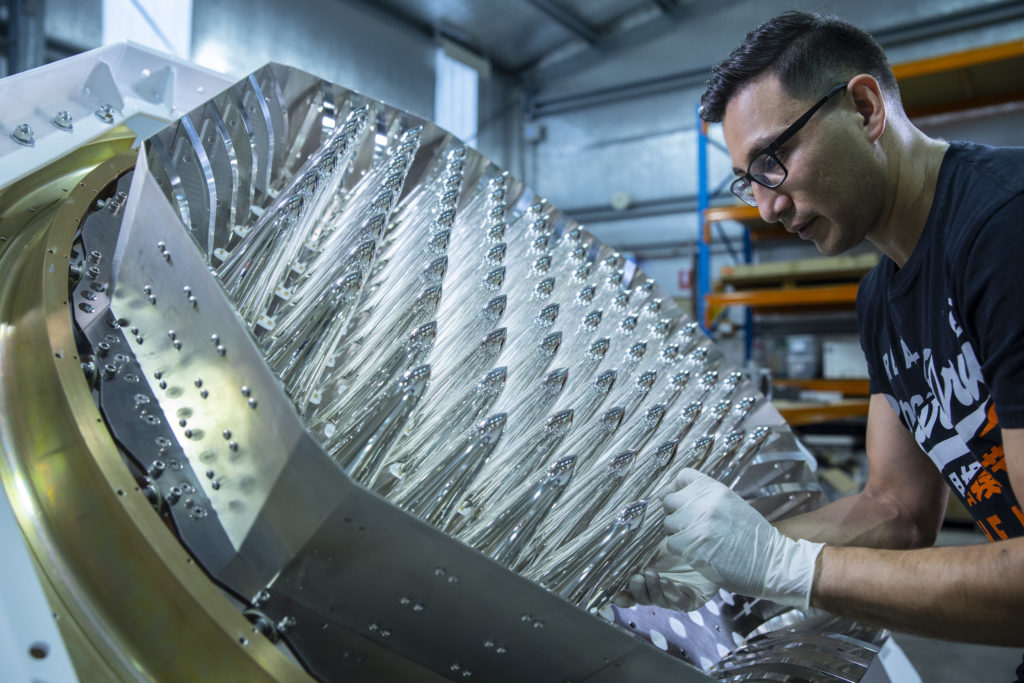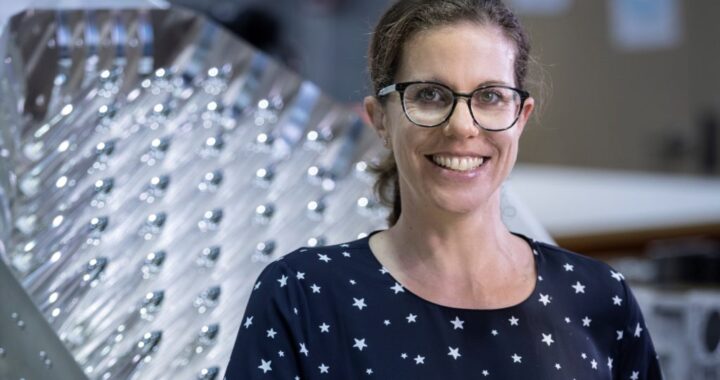Reproduced from https://blog.csiro.au/quasar-satellite-technologies/. Clearbox Systems is proud to be a founding investor in Quasar Satellite Technologies.
From astrophysicist to medical physicist to space entrepreneur, Dr Ilana Feain combines her passions for science, technology and innovation every day.
As a founding director, Dr Ilana Feain celebrated her proudest professional achievement with the launch of Quasar Satellite Technologies.
“Quasar Satellite Technologies is taking CSIRO’s phased array technology, developed for radio telescopes, and is re-purposing it for applications in the space industry. Like satellite to ground communications,” Ilana said.
So, what is phased array technology? And how did Ilana move from astrophysics to commercialisation?
The astrophysicist
“I was part of the team when the first phased array feed was being developed for CSIRO’s newest radio telescope, ASKAP,” Ilana said.
Our phased array feed (PAF) is a specialised receiver, like a multi-pixel, wide-angle lens designed for radio telescopes. Most receivers are the equivalent of a single pixel – they see a small part of the sky at once. The ASKAP PAF has 72 beams or pixels, enabling it to image more of the sky, more quickly. This is really useful for astrophysicists, like Ilana, who want to study objects like ra dio galaxies.If you could see radio wavelengths, you would see Centaurus A’s jets light up an area of sky 200 times larger than the full moon.
dio galaxies.If you could see radio wavelengths, you would see Centaurus A’s jets light up an area of sky 200 times larger than the full moon.
“My favourite galaxy, Centaurus A, is quite special because the monster black hole at its centre generates jets of radio-emitting particles that billow millions of light-years out into space,” Ilana said.
“Before ASKAP, it took my team 1200 hours to image Centaurus A. Now with ASKAP and its PAF technology, it will only take a matter of hours!”
Ilana started thinking there had to be other industries that could benefit from this ground-breaking technology. So, she began investigating the suitability of the PAF technology for application in breast cancer screening.
“It wasn’t the right time for it to take off, but the experience confirmed my gut instinct. There were applications for this technology beyond astronomy,” she said.
The medical physicist
Ilana then moved into medical physics, where she co-founded a spinout company specialising in cancer radiotherapy treatment. It was here that she learnt the art and science of commercialisation.
“I learnt how important it was to get out of the office and talk to customers. The ‘build it and they will come’ approach doesn’t work,” Ilana said.
“The team is always more important than the technology and the values of the team drive its culture.
“I also learnt how to write business cases and investor memorandums rather than academic publications and research grant applications,” she said.
While Ilana was honing her commercialisation expertise outside CSIRO, our team continued to develop the technology. It was time to bring in a commercialisation specialist. They just needed to find someone with the right expertise and experience.
Becoming a space entrepreneur
“When I first got the call, I could see the enormous potential. I had a lot of respect for the engineers and the quality of their technology,” Ilana said.
“The first step was to identify the challenge. We needed a problem that our technology could solve for a market in need, which was ready to invest in the solution.”

The latest evolution of our phased array technology will help Quasar Space Technologies’ ground station service to communicate with hundreds of satellites simultaneously. Image: CSIRO.
The satellite challenge
“Satellite services are critical for many aspects of daily life, from tracking your toilet paper delivery to providing telehealth services in the bush or monitoring events like floods or bushfires,” Ilana said.
But with tens of thousands of satellites set to be launched in the next decade, there is going to be a real bottleneck getting that data back to the ground.
This is because every satellite needs a home base to communicate with on the ground. These ground stations track one satellite at a time, which means there’ll be quite the waiting list for all those new satellites to get an appointment with a ground station.
Basically, we are going to need a lot more ground stations to meet demand and ensure timely communication with all those satellites.
Enter the potential of the phased array
Satellites already communicate using phased arrays. It’s how you connect to the internet on a plane! But it’s still mostly a one-to-one communication situation.
Our phased array technology is capable of so much more. Cooled to -250 degrees Celsius, the latest generation of the technology is very cool, literally!
“The brilliant engineers have also designed more innovative front and back ends, increasing performance and sensitivity,” Ilana said.
“The technology can generate more beams, each capable of operating at different frequencies, and offers better performance than anything available in the ground station market to date.
“This was the right challenge, with a market in need of a solution and ready to invest.”
So Ilana deployed all her knowledge and expertise using her network to gather a diverse set of people together to workshop the opportunity, talking to the engineers, the end-users, the IP lawyers. And all their hard work paid off.
A new dawn for satellite technology
Quasar Satellite Technologies will be adapting our phased array technology to create ground stations that can communicate with tens or hundreds of satellites simultaneously. This will deliver access to satellite data in real-time.

Present-day ground stations talk to one satellite at a time. Quasar Satellite Technologies’ ground stations will be able to talk to hundreds of satellites at once.
“I feel thrilled to have been part of the team to bring technology developed for radio astronomy to solve the looming congestion challenge facing satellite-based businesses,” Ilana said.
“I’m looking forward to seeing the day when Quasar Satellite Technologies is on the ground communicating with all those satellites. Plus I’m really excited about what else is around the corner.”
There is so much more untapped ingenuity just waiting to come out of the lab and solve another major challenge.
“You never know what real-world impacts blue-sky research will deliver. Quasar is a perfect example of technology translation from basic research to industry.”
